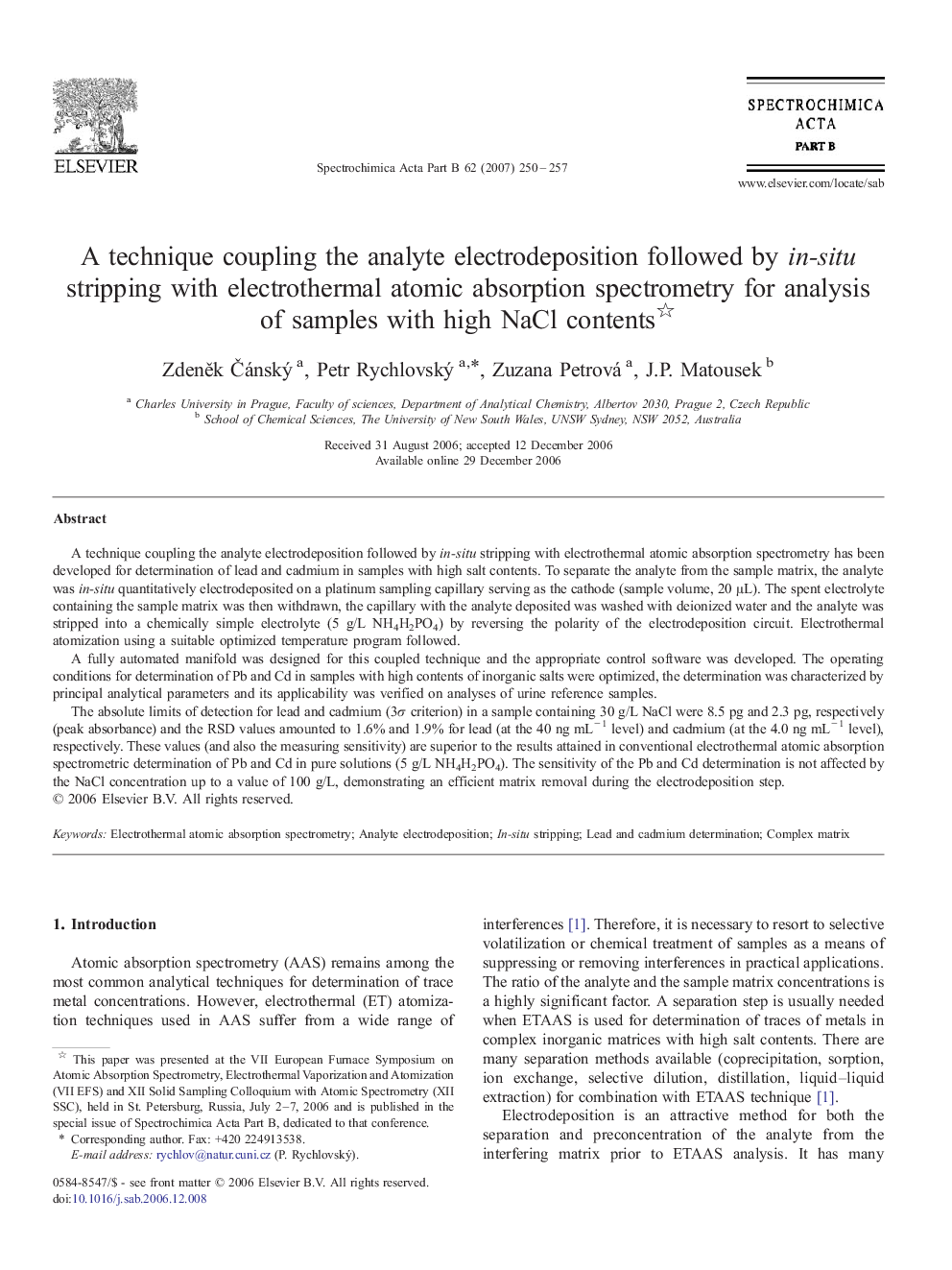| Article ID | Journal | Published Year | Pages | File Type |
|---|---|---|---|---|
| 1240570 | Spectrochimica Acta Part B: Atomic Spectroscopy | 2007 | 8 Pages |
A technique coupling the analyte electrodeposition followed by in-situ stripping with electrothermal atomic absorption spectrometry has been developed for determination of lead and cadmium in samples with high salt contents. To separate the analyte from the sample matrix, the analyte was in-situ quantitatively electrodeposited on a platinum sampling capillary serving as the cathode (sample volume, 20 μL). The spent electrolyte containing the sample matrix was then withdrawn, the capillary with the analyte deposited was washed with deionized water and the analyte was stripped into a chemically simple electrolyte (5 g/L NH4H2PO4) by reversing the polarity of the electrodeposition circuit. Electrothermal atomization using a suitable optimized temperature program followed.A fully automated manifold was designed for this coupled technique and the appropriate control software was developed. The operating conditions for determination of Pb and Cd in samples with high contents of inorganic salts were optimized, the determination was characterized by principal analytical parameters and its applicability was verified on analyses of urine reference samples.The absolute limits of detection for lead and cadmium (3σ criterion) in a sample containing 30 g/L NaCl were 8.5 pg and 2.3 pg, respectively (peak absorbance) and the RSD values amounted to 1.6% and 1.9% for lead (at the 40 ng mL− 1 level) and cadmium (at the 4.0 ng mL− 1 level), respectively. These values (and also the measuring sensitivity) are superior to the results attained in conventional electrothermal atomic absorption spectrometric determination of Pb and Cd in pure solutions (5 g/L NH4H2PO4). The sensitivity of the Pb and Cd determination is not affected by the NaCl concentration up to a value of 100 g/L, demonstrating an efficient matrix removal during the electrodeposition step.
